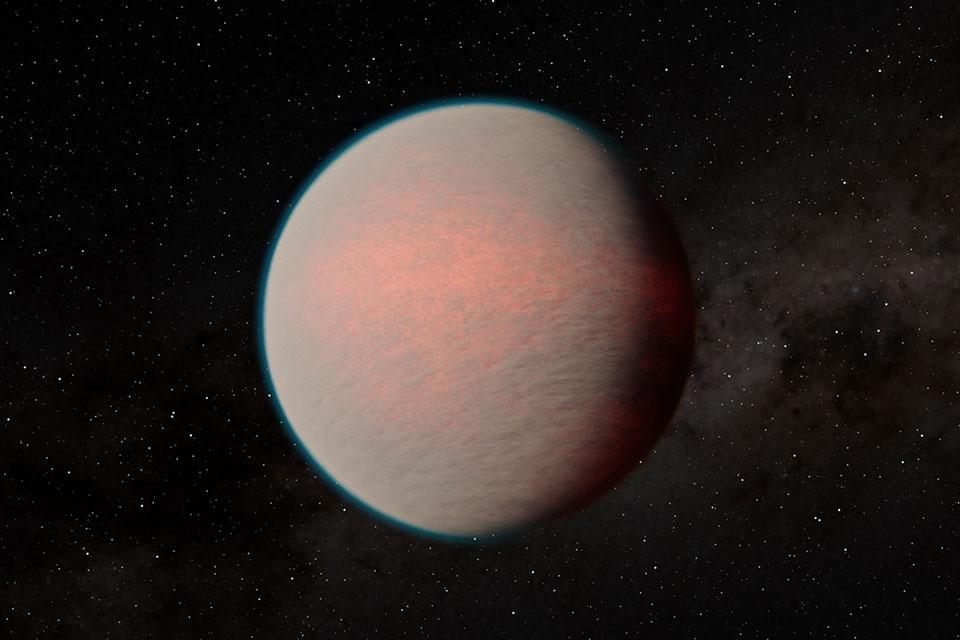Brand new intel on mysterious planet GJ 1214 b has been gleaned thanks to NASA’s James Webb Space Telescope. Planet GJ 1214 b was first observed by the Hubble Space Telescope but was blocked by a thick blanket of cloud and so until now has remained a mystery. JWST was able to observe the planet thanks to its Mid-Infrared Instrument (MIRI) revealing major new insights into its atmosphere.
For the last decade, all that was known about GJ 1214 b was that it had a cloudy or hazy atmosphere as previous observations from Hubble, Spitzer and ground-based telescopes had yielded inconclusive results. To penetrate such a thick barrier, the international research team took a chance on a novel approach: they not only made the standard observation – capturing light from the host star that is filtered through the planet’s atmosphere – but also tracked GJ 1214 b through its entire orbit around the star. This allowed them to create a kind of ‘heat map’ of the planet as it passed through phases, similar to how we see Earth’s Moon. But in this case, the phases were seen in infrared radiation rather than visible light. The team were also able to observe a full orbit revealing both its day- and night-sides.
An enriched atmosphere
The findings reveal several insights into GJ 1214 b. The team found that the temperature is much cooler than expected; its unusually bright atmosphere – another surprise to the researchers – reflects a large fraction of the light from its parent star rather than absorbing it and becoming hotter. They also found a stark contrast between day and night temperatures; the planet’s atmosphere is not that good at carrying energy from the irradiated dayside to the dark nightside which means the nightside is several hundreds of kelvins cooler than the dayside. This in turn implies that GJ 1214 b has an enriched atmosphere made up of heavier molecules such as water or methane. The fact that hydrogen is no longer a major species in this atmosphere gives potentially important clues as to the planet’s history and formation hinting at a watery start.
The research team included physicists from Oxford’s Department of Physics: Dr Vivien Parmentier (now at Université Côte d’Azur) ran the global circulation models that predicted how the day to night contrast might vary while Dr Jake Taylor ran a series of atmospheric retrieval models allowing to quantitatively measure the amount of water and methane in the atmosphere. Both studies conclude an enriched atmosphere.
A water world?
‘The planet is between Earth and Neptune in size, so there are no analogues in the solar-system,’ comments Dr Parmentier. ‘It is a type of planet we refer to as a "sub-Neptune" in our paper. Sub-Neptunes are the most common type of planet in the galaxy but remain a mystery as they do not appear in our own solar system – are they mini-Neptunes or could they even be super-Earths? Or perhaps something in between, never seen, such as a water world?’
‘The results in our paper represent a variety of important firsts,’ concludes Dr Taylor. ‘It was the first phase curve observation of a sub-Neptune exoplanet over this spectral region, the first detection of thermal emission from an exoplanet cooler than 600K, the first meaningful constraints on the atmospheric composition of GJ1214b and the largest albedo measurement for an exoplanet thus far.’
A reflective, metal-rich atmosphere for GJ1214b from its JWST phase curve, Kempton et al, Nature, 10 May 2023

